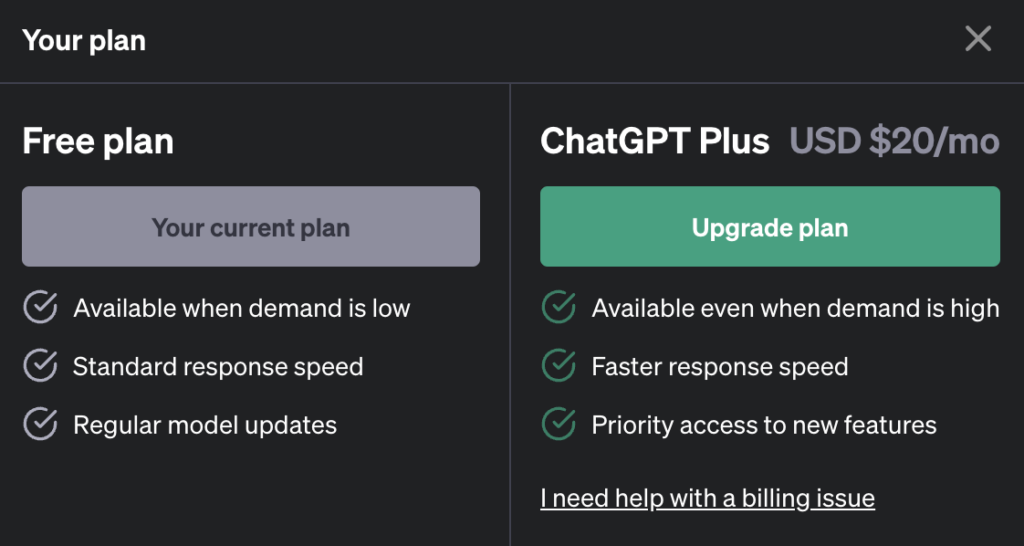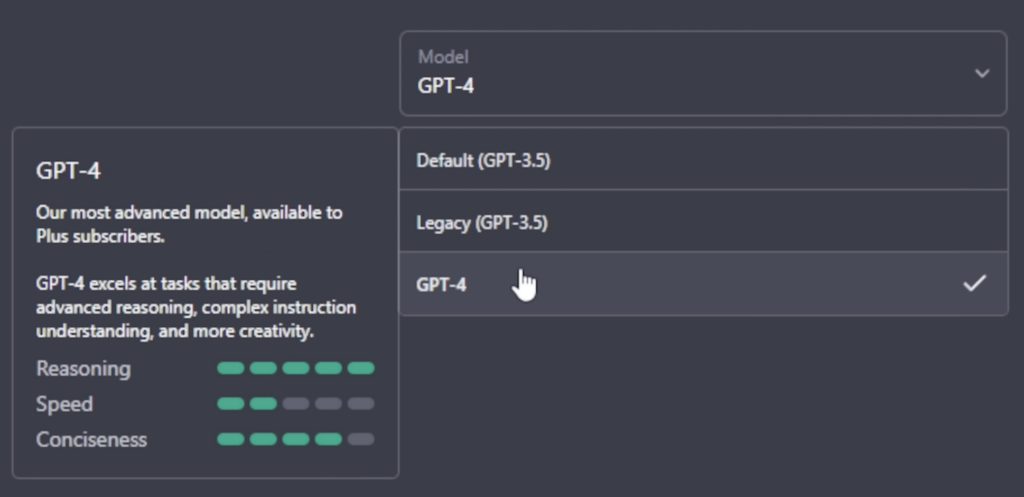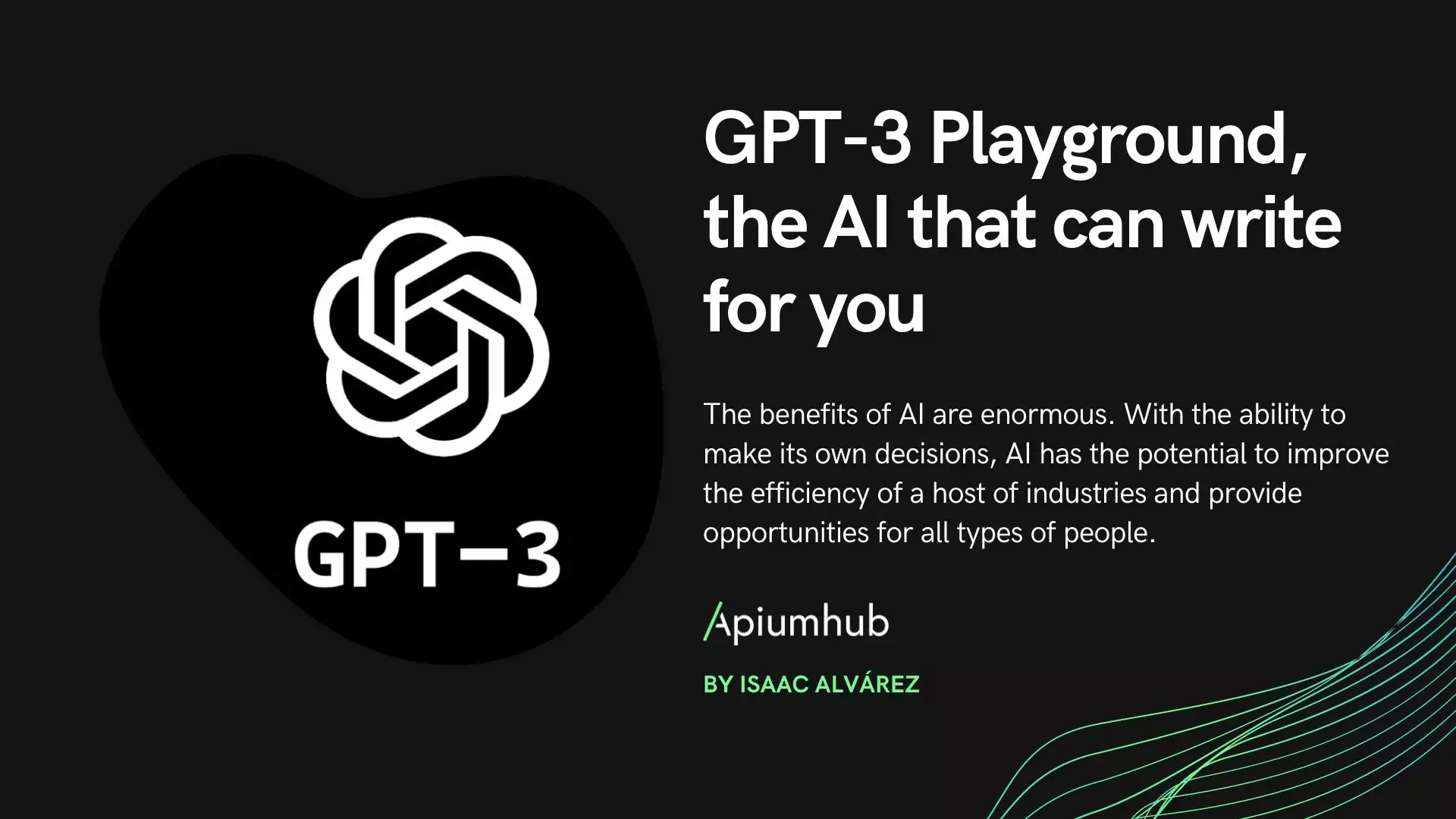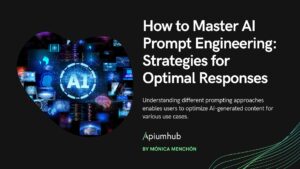Table of Contents
In recent years, the development of natural language systems based on artificial intelligence has experienced unprecedented progress. Among these systems is GPT-4, the latest version of the OpenIA-powered conversational platform, which has revolutionized the way we interact with technology and opened up endless possibilities for human communication.
GPT-4 has been trained with an enormous amount of data and has been designed to be more accurate, faster, and more flexible than ever before. Notable features include its ability to retain conversational context, its ability to generate abstract and creative responses, and its flexibility to be customized for different contexts and application areas.
In this article, we will explore in detail the features of GPT-4 and its potential to revolutionize human communication. In addition, we will discuss the differences between ChatGPT and GPT-4, what’s new about it, and how it can be accessed for free or through different pricing plans.
Differences with ChatGPT
According to OpenAI documentation, ChatGPT has 12 layers and 175 billion parameters. According to Wired, the main disparity between OpenAI’s latest model and its evolution may lie in parameters. GPT-4 may have been trained with 100 billion parameters, about 600 times more than its predecessor.
The difference between the two models is also reflected in the context window, i.e., the model’s ability to absorb words at a time. In addition, GPT-4 has a “multimodal” nature. Unlike its predecessor, GPT-4 has the ability to support images as input, although this feature is not currently available, at least for the time being. They promise that we will be able to upload images to provide visual cues, although the results will always be presented to us in text format.
There are many more differences between these two models in terms of the results obtained. For further details, see the OpenAI research article, which includes the results of various tests that GPT-4 has faced in contrast to GPT-3.5 (ChatGPT.)
What’s new in GPT-4
GPT-4 has a number of unique and enhanced features compared to its predecessors. These include:
Context retention capability
The GPT-4 model has the ability to retain the context of the conversation and use that information to generate more accurate and coherent responses. In addition, it can handle more than 25,000 words of text, enabling use cases such as extensive content creation, lengthy conversations, and document search and analysis.
An example of this is the following:

What GPT-4 is asked to do in this example is to describe why Rihanna’s Super Bowl Wikipedia text (containing about 1600 characters) was special. The result was as follows:

Generation of creative and abstract responses
GPT-4 has the ability to generate more creative and abstract responses. It can generate, edit, and interact with users in technical and creative writing tasks, such as composing songs, writing scripts, or learning a user’s writing style.
An example we can find in this creative realm is to ask GPT-4 to explain the plot of Cinderella in a sentence where each word has to start with the next letter of the alphabet from A to Z without repeating any letter.

As a result, we obtain a sentence in which each word begins with a consecutive letter of the alphabet and in which, in addition, we find meaning in it using a poetic tone.

Image insertion
One of the biggest new features of GPT-4 and one that attracts a lot of attention from users is that GPT-4 can accept images as inputs and generate captions, ratings, and analysis. This opens up a world of possibilities and, although unfortunately as mentioned above it is not yet available, we can show you an example provided by OpenIA about this feature. The example is as follows: you ask GPT-4, “What can I do with these ingredients?”, and attach an image with a certain variety of ingredients.

As a result, we obtain a list of recipes that can be made with the ingredients provided in the image, which, as far as we can see, has been very successful.

If you want to see more examples of this amazing feature of GPT-4, you can click here and go to the Visual Inputs section. You will find everything from graph analysis to questions about the meaning of some memes.
Flexibility, capacity, and quality
GPT-4 has been designed with the objective of being highly customizable to suit different contexts and application areas. This means that the platform can be tailored to the specific needs of users. In addition, it has been optimized to process information faster and more efficiently, which translates into a higher speed of response during conversations. All this has been possible thanks to the extensive data set used in the training of GPT-4, thus improving the quality and fluency of the conversations generated by the platform.
Other interesting facts
OpenAI spent six months improving the security and alignment of GPT-4. In its internal evaluations, GPT-4 is now 82% less likely to respond to requests for impermissible content and 40% more likely to generate fact-based responses compared to GPT-3.5.
Debate on stopping AIs for 6 months
In the technology field, people like Tesla and SpaceX founder Elon Musk, Apple co-founder Steve Wozniak, historian Yuval Noah Harari, and 14,000 others, including leading researchers in the field of artificial intelligence, have come together to sign a letter calling for a six-month halt to the evolution of artificial intelligence. The letter is based on the premise that it prevents “profound risks to society and humanity” from being properly managed and controlled.
The letter adds that “advanced artificial intelligence has the potential to generate profound change in the history of life on Earth and must be planned and managed with due care and the necessary resources.” “Unfortunately, this level of planning and management is not taking place, despite the fact that in recent months AI labs have been engaged in a wild race to develop and deploy ever more powerful digital minds that not even their own creators, or anyone else, can reliably understand, predict, or control.”
He goes on to state that “these protocols must ensure that the systems that adopt them are unquestionably secure. This does not imply stopping the development of artificial intelligence in general, but rather taking a step back in the dangerous race toward ever larger and more unpredictable black box models with emerging capabilities.”
There is also a demand for a stronger governance system, i.e., new regulatory authorities in charge of overseeing and monitoring AI with a strong auditing and certification ecosystem. One thing they also demand is that suppliers must take responsibility for damages caused by AI.
Currently, the regulation of artificial intelligence (AI) is very diverse. In the United States, the Chamber of Commerce called for increased regulation to prevent AI from hindering economic growth or posing a risk to national security.
For its part, in the UK, the government has ruled out the creation of a new body dedicated to AI governance. Instead, it is urging existing regulators in various fields, such as the Equality and Human Rights Commission and the Competition and Markets Authority, to develop sector-specific approaches.
Meanwhile, in the European Union, progress is being made in drafting a new AI law as well as implementing stricter regulations on data quality, transparency, human oversight, and accountability.
The charter, regulation by governments, public opinion… All this has led to a debate: does it make sense to halt the advance of AI?
Millions of people, companies, and organizations around the world are using and working with artificial intelligence (AI). Stopping the use of AI internationally for six months, as proposed in a recent open letter released by The Future of Life Institute, appears incredibly difficult, if not impossible. The issues addressed and the actions proposed are perhaps not the most realistic or feasible. I explain, it is very complicated to stop all research, which can become complicated, and only accept the safe ones. In addition, the focus is mainly on the major language models without taking into account the rest.
How to use GPT-4
To use it, we have several options, but we are going to explain the two most widespread today. The first one will be on the ChatGPT website itself. If you want to know how it works, there is a video on our YouTube channel where we introduce you to the previous version.
When we are on the ChatGPT website, we will have to register. Once we are inside with our user, the only way to use this new version is to pay a subscription of 20 dollars per month. To do this, we will have to go to the bottom left and click on the Upgrade to Plus option. Once we have clicked on it, the following informative alert will appear.

Finally, we will have to select the Upgrade Plan option and we will be able to subscribe as in any other web or service.
Once we are subscribed to the Plus plan, we will see a web very similar to the previous one, but with a small difference at the top.

What we will be able to see is a model selector similar to the one we have in GPT-3 and that we explained in a previous article. If we activate the drop-down, we will see the following:

We will be able to see all the possible language models we have, from the current one, an old version of GPT-3.5, to the current one, the one we are interested in. To use this new model, we will only have to select GPT-4, and everything we write on the web from now on will be against this new model. As we can see, we also have a description of each of the models and their ratings against three characteristics.

Although GPT-4 is limited to ChatGPT Plus subscribers, there is a way to try it without paying or downloading anything. According to Microsoft, the latest version of the powerful bot has been included in Bing, the company’s web search engine.
To do so, just go to bing.com/chat in the browser and sign in with a Microsoft account, or you can go directly to Bing and click on the chat option above.

Once we have logged in, we will find ourselves in a chat in which we will be able to select three conversation styles.

The version of GPT-4 used by Bing has the drawback of being optimized for search. Therefore, it is more likely to display answers that include links to pages found by Bing’s search engine. Also, it is only officially available in Microsoft’s Edge browser, with a question limit that in recent weeks has been increasing.
Companies that are using it
GPT-4 is a reality, and to prove it, several companies are already using it in their own products.
One of the bold ones has been Duolingo, which is using it to deepen its conversations with its customers with the latest features introduced, such as role play and a conversation partner.
Another company is Stripe, the famous payment gateway, which is now using GPT-4 to scan certain websites and deliver a summary that outperforms those written by people, to offer greater security to its customers.
Finally, one that has caught my attention the most is that it is also being used by the Icelandic government to combat their concern about the loss of their native language, Icelandic. To do this, they have worked with OpenIA to provide a correct translation from English to Icelandic through GPT-4.
If you want to explore more applications developed with GPT-4 and learn more about the mentioned cases, you can do it on their website by going to the Build with GPT-4 section.
Conclusion
In conclusion, the advent of new language models in the field of artificial intelligence has generated palpable controversy in today’s society. While these technological advancements offer enormous benefits in terms of efficiency and task automation, they have also sparked widespread concern about the potential of intelligent robots replacing human workers.
Understandably, concerns about job obsolescence arise in a world where technological advances are steadily accelerating. However, it is important to remember that artificial intelligence is not a threat in itself, but a tool designed to complement and enhance human capabilities.
Historically, technological advances have transformed societies and the labor market, but they have also created new opportunities and jobs. As machines take on routine and repetitive tasks, humans will be able to focus on activities that require creativity, critical thinking, and interpersonal skills, where machines still have limitations.
It is essential that, as a society, we address the challenges that artificial intelligence poses in terms of ethics and regulation. We must ensure that technological advances are used responsibly, guaranteeing transparency, privacy, and respect for human values.
Instead of fearing the arrival of new technologies, we must prepare for and adapt to the changes they bring. Continuing education and training will be critical in this process, allowing us to develop the skills required to flourish in a society increasingly dominated by artificial intelligence.
In summary, while it is understandable that the advent of a new language model in the field of artificial intelligence raises concerns about job losses, it is important to take a balanced view. Artificial intelligence has the potential to improve our lives and free us from monotonous tasks, allowing us to focus on more meaningful activities or even improve our productivity. By addressing ethical challenges and preparing ourselves properly, we can take full advantage of the benefits this technology offers and forge a future where humans and machines work together in harmony.
Author
-

I consider myself a proactive, responsible, understandable person who works well in a team. In my work I need challenges and be constantly learning. I want to grow personally and professionally.
View all posts











